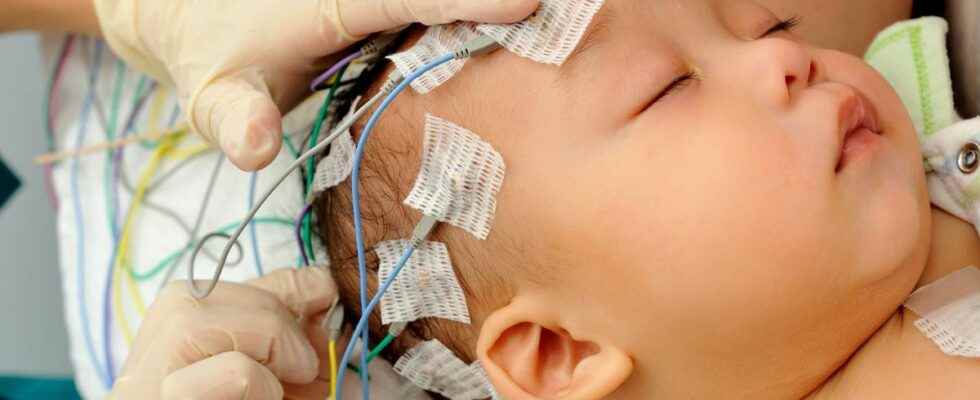Published on
Updated
Reading 2 mins.
Developed by a French start-up, a new medical imaging device would make it possible to detect neurodevelopmental disorders, including autism, earlier and more precisely. Indeed, it would be able to map the areas of the brain whose functioning seems abnormal, in order to direct towards an early diagnosis.
The earlier a neurodevelopmental disorder such as autism is discovered, the more early action in the child will make it possible to reduce its manifestations as much as possible. To allow children in whom this type of disorder is suspected to be diagnosed as soon as possible, the French start-up Iconeus announces the launch of a study of its device at the Robert-Debré hospital in Paris.
As simple as an ultrasound
This new device, simpler and less expensive than an MRI according to those who developed it, uses technologies developed by researchers from Inserm and CNRS. Composed of a probe, it will be placed on the baby’s fontanelle and held in place by a patented device in order to detect minute variations in cerebral blood circulation.
A cartography of the abnormal zones could be established, with in parallel the activity of the associated nervous cells. Objective: to obtain an early diagnosis for more effective management.
Diagnoses still too late
At present, autistic children are still detected too late, on average around the age of 5 years. While it is essential to know as quickly as possible if a child suffers from this type of disorder, as Florent Chapel, co-president of Autism Info Service, points out. “The definitive diagnosis of autism is made around the age of seven on average. But the interest of a diagnosis earlier in the child’s life also allows early treatment. And therefore also more intense care for these children. Because when they are quickly and correctly stimulated, following the detection of an atypical functioning of their brain, sometimes certain disorders are reabsorbed“he details.
Start of testing in 2023
Tested on mice since 2018, the device will now be tested on around twenty children as part of a study at the Robert-Debré hospital in Paris, in early 2023. To do this, the doctors will compare the brain images obtained from children born at term with those of children born prematurely – the latter being considered to have a higher risk of being affected by autism.
Will we be able to make a diagnosis of neurodevelopmental disorder immediately? “It is too early to tell“says Florent Chapel, who nevertheless welcomes the line of research and is waiting to see the results of the study to comment further.
